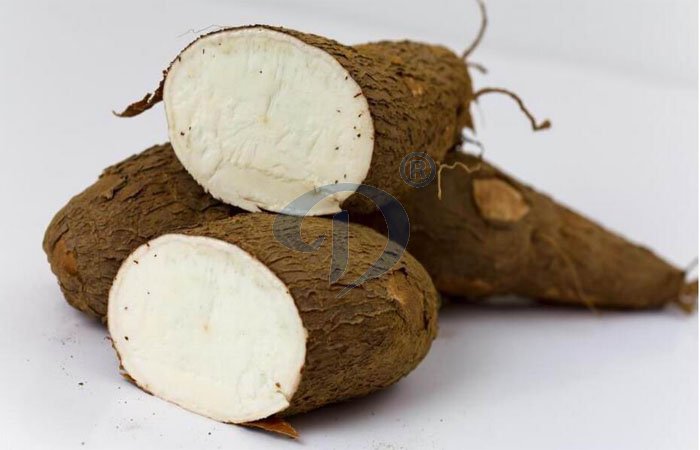Difference Between Tapioca Starch and Tapioca Flour

Cassava
One main difference between tapioca starch from tapioca flour is that tapioca is derived from the starch of the cassava plant while the flour is taken from the root of it. Both are hauled out from Manihot esculenta. This plant species is found in the Amazon, Brazil, Colombia, Venezuela, Cuba, Puerto Rico, Haiti, the Dominican Republic, Honduras, and most of the West Indies. This is now nurtured around the globe and commonly known with numerous names. Although termed differently depending on the country, tapioca is usually known as cassava or bitter cassava.
The English name tapioca originated from the South American Tupi which, on the whole, refers to the method through which the cassava is made suitable for eating. It is believed that the roots of the bitter cassava plant contain very detrimental cryogenic glycosides, linamarin, and lotaustralin content. The cassava plant has either red or green branches. Most of the dangerous contents are found in the green branches so it is subject to specific treatments to remove the toxins. Insufficiently processed bitter cassava can cause paralytic disease when consumed for a couple of weeks. Thus, these roots are processed to make the starch.
The cassava is the third best source of carbohydrates in the world; it is the staple food among many people. Once processed, the starch can be turned into powdered, thick flour, rectangular sticks, pearls, or boba to some cultures, and tapioca flakes. Consequently, tapioca starch versus tapioca flour is only a consideration when you have no idea what starch selection you want to purchase.
Tapioca is notably known around the globe that it is gluten-free. A myriad of people are the ones benefiting from it more because nearly 1 in 100 people in the U.K. alone is suffering from gluten intolerance. Gluten intolerance is medically termed as Celiac disease. Celiac disease is a condition in which the lining of the small intestine is damaged thus preventing it from absorbing parts of the food that are vital for maintaining health. Gluten is found in wheat, rye, barley, and oats. The reaction with gluten causes damage through the intestinal wall. Thus, those people affected by this disease choose to eat pre-filtered tapioca flour for several gastronomic uses.
Tapioca flour is preferred in the kitchen due to its smooth texture, light, and super white flour which becomes opaque or translucent when cooked. It provides a favorable chewiness to baked products such as muffins, etc. It renders a very white loaf whether whole wheat bread or white. It thickens readily. That’s why it is known as a good, economical thickener thus saving energy in the process. It does not coagulate easily unlike any other cornstarch so it is a usual choice for frozen delicacies. Tapioca flour gives a glossy and very appetizing look for pies, sauces, gravies, stews, and soups. It is also a perfect dredging flour when mixed with cornstarch. Tapioca flour has no scent of its own that is why it never mixes with the flavors of the dish.
Other than it is gluten-free, it also has no fats in any form, no vitamins and minerals, and is almost protein free. It is solely rich in carbohydrates.
Leave a message
contact us
- WhatsApp:
+8613526615783
- Email:
sales@doinggroup.com
- Tel:
0086 135 2661 5783
- Phone:
0086 371 5677 1822
- Skype:
elina881130
- Address:
No.133 Yaozhai Road, Jinshui District, Zhengzhou City, Henan Province, China
News
-
 Cassava chips processing machine shipped to Nigeria
Cassava chips processing machine shipped to Nigeria
-
 Factors affecting the price of cassava processing equipment
Factors affecting the price of cassava processing equipment
-
 How to starct cassava production and processing business in Nigeria ?
How to starct cassava production and processing business in Nigeria ?
-
 DOING cassava starch production line successfully delivered to Nigeria
DOING cassava starch production line successfully delivered to Nigeria
-
 Cassava peeling machine shipped to Nigeria
Cassava peeling machine shipped to Nigeria
-
 What are the advantages of automatic starch production line ?
What are the advantages of automatic starch production line ?
-
 Garri processing machines and their prices
Garri processing machines and their prices
-
 New cassava slicer machine are ready to ship to Nigeria
New cassava slicer machine are ready to ship to Nigeria
-
 How profitable is garri processing business in nigeria ?
How profitable is garri processing business in nigeria ?
-
 Factors affecting the price of garri processing machine
Factors affecting the price of garri processing machine
Products
FAQ
-
 What is high quality cassava flour, how to produce high quality cassava flour ?
What is high quality cassava flour, how to produce high quality cassava flour ?
-
 How to process cassava into cassava chips ?
How to process cassava into cassava chips ?
-
 Cassava starch manufacturing process
Cassava starch manufacturing process
-
 How to maintain cassava starch processing equipment ?
How to maintain cassava starch processing equipment ?
-
 How to extract cassava starch ?
How to extract cassava starch ?
-
 How to make cassasva starch?
How to make cassasva starch?
-
 Water, electricity, steam and land deploy in starch processing plant
Water, electricity, steam and land deploy in starch processing plant
-
 How profitable is cassava starch made?
How profitable is cassava starch made?
Leave a message

Tel/Whatsapp:
+8613526615783



